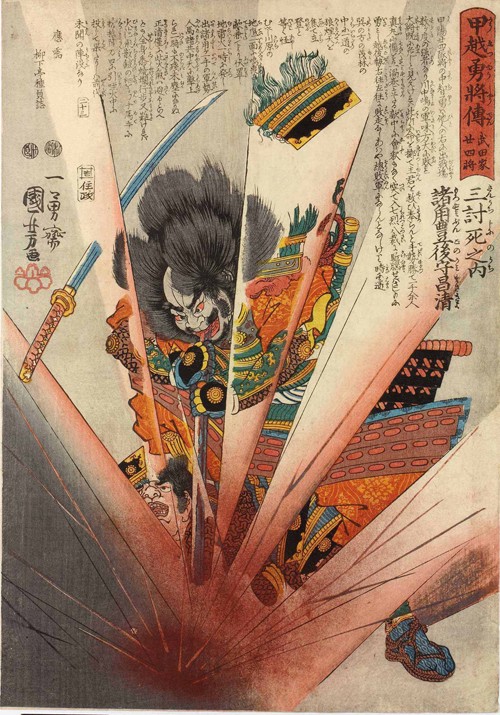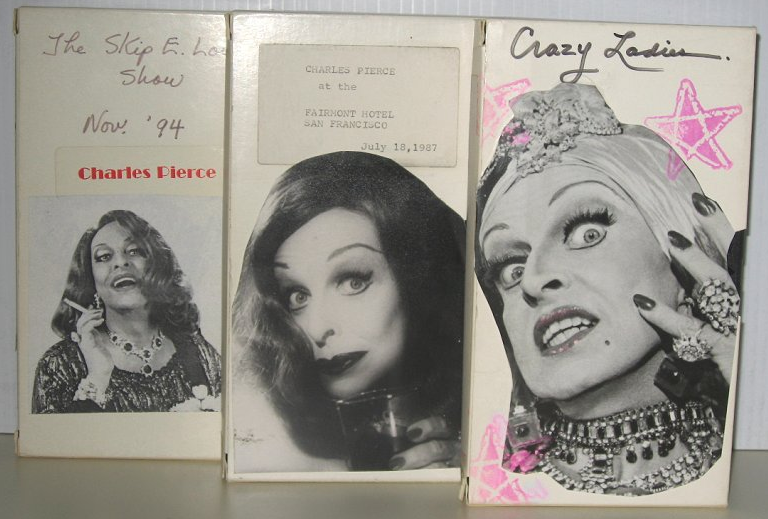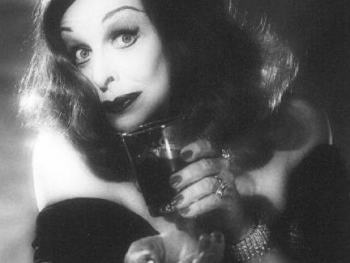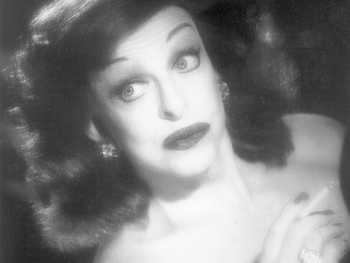Utagawa Kuniyoshi Show Completely Awesome

You should be running, not walking, to the Japan Society, for this new exhibition of Utagawa Kuniyoshi. This print is from 1848! And yet it couldn’t look more amazingly contemporary. I mean LOOK AT THAT. (The Japan Society, by the way, is now free admission on free Fridays from 6 to 9 p.m. The more you know!) [Above: Utagawa Kuniyoshi, “Morozumi Masakiyo Kills Himself in Battle,” c. 1848. Color woodblock print, 14 3/8 x 10 1/8 in. American Friends of The British Museum (The Arthur R. Miller Collection) 15009. Photo © Trustees of The British Museum.]
The Semi-Feminism Of "Liz Lemonism"
“The popular television sitcom ’30 Rock’ premiered in the year 2006. Since that time, each man that I have dated has made a point of saying how much I remind him of the main character on that show, Liz Lemon. They said this, in each case, while we were breaking up.”
Robert Culp, 1930-2010
Robert Culp, the actor best known as Bill Cosby’s co-star on “I Spy” (but who will be forever remembered by members of a certain generation, i.e. mine, as Agent Bill Maxwell on “The Greatest American Hero”), died yesterday after a fall. Culp also starred in the classic film Bob & Carol & Ted & Alice. He was 79.
If There Is Still A California In November It Will Vote On Legalizing Pot
I can’t wait to see the commercials the Mormons fund against this one: “State election officials announced Wednesday that an initiative to legalize marijuana will be on the November ballot, triggering what will likely be an expensive, divisive and much-watched campaign to decide whether California will again lead the nation in softening drug laws.”
Is It Curtains for Nasty Pope Ratzi?

A thirty-year campaign by hundreds of deaf Catholic school students to get a chronic child-abusing priest removed and then prosecuted was largely ignored until, in the 90s, an attempt to resolve the outrage in the community resulted in an appeal to the Vatican-to the desk of Cardinal Joseph Ratzinger, who is now the Pope. While Pope Ratzi was no doubt confused by the issue of timeliness, he first refused to respond to the inquiry and then his office declined to put the molester on trial. So the very head of the Catholic Church is directly implicated in multiple coverups of and inaction regarding child abuse. Whatever do we think the Church will do?
Five Democrat Vote-Switchers Totally Dead To Everyone

There are now two conflicting 2010 and 2012 election narratives. (Well, three, really, if you count the “Mayan disaster” narrative, in which, in ’12, everyone in politics is killed when the Mayans RELEASE THE KRAKEN.) One is the Republicans’ “resist and repeal and refuse and other words that start with ‘r’” about how they will use the giving of health insurance to the working class to get the Demoncrats out of office. And now, well, this is different: the Dems and their labor union pals think they can crucify the five Democrats who switched their votes on health care reform to “no.” Basically Nancy Pelosi is going from office to office and banging a shoe on each of their desks while everyone else is out finding better Democrats to run against them. (This is going to be the longest year ever for Michael Arcuri, D-NY, of the least-Hampton of them all, the uncharming burg of Binghamton.) Also, this is AWESOME.
Very Recent History: Charles Pierce
by Daniel D’Addario

Today’s top actresses (your Natalie Portmans, Reese Witherspoons, your-what the hell?-Rachel McAdamses) are all arch-feminine. They play vulnerable, lissome, thin, and, often, ever-so-polite. It’s been that way for a while. Who was the last big movie star who broached any sort of gender boundary? Kathleen Turner, maybe-and where is she? On a recent episode of RuPaul’s Drag Race, in which the contestants and RuPaul manques were asked to impersonate celebrities, not a single current movie star was represented, unless you count Paris Hilton. Have you ever seen a drag queen impersonate Gwyneth Paltrow?
The 1940s and 1950s, though, were lousy with actresses with husky voices, aggressive manners and nicotine habits. Think of most of the female celebrities Madonna mentions in “Vogue,” and the ones she doesn’t, such as Tallulah Bankhead. It was an ideal time for that thing that came before the drag queen-the female impersonator. Perhaps the greatest of all was “female impersonator” Charles Pierce: cabaret performer, sort-of socialite, and one of the improbable successes of the American theater. In terms of semiotic play, he was what Lady Gaga would have been if she were sixty years older, and actually had a penis.
Pierce was born in 1926-like any year before, say, 1970, an unfortunate time to be born gay. He grew up identifying with performers, but not necessarily female performers. While he did attend elementary school for Halloween dressed as Mae West, he was just as interested in male stars. “I was always prepared to do a character from the movies that I’d seen; I never just actually dressed up to be a woman. I dressed up to be Mae West or Bette Davis or W. C. Fields or whoever, and then one thing led to another,” Pierce said in an interview for an oral-history project at Southern Methodist University in 1989, ten years before his death. Bette Davis and W. C. Fields were indistinguishable to him: both were famous, and if he had to dress up like a woman to tell the crude, campy jokes he liked, so be it.
Pierce’s early career was unrecognizable by today’s standards of female impersonation. He bore more similarity to the after-hours drag queens on RuPaul’s show, sitting around with smeared makeup and wig caps but no wigs, after they’ve stopped trying to convince their viewer that they’re “real” women. Pierce started out as a female impersonator by pantomiming Julie Andrews, while wearing a portmanteau outfit of a dress, men’s trousers, and a turtleneck. He was not trying to convince anyone of anything, besides that he was funny.
Even after he was legally allowed to take on full drag (as he hadn’t been in his Andrews era, in Miami in the early 50s), his makeup was plastered on mannish features and his gowns and jewelry were both overdone and comically threadbare. He was nothing like his forebear, the female impersonator Julian Eltinge, who slaved over the ultimate everywoman persona in the 1900s and 1910s (“Part of the admiration of his performances came from how convincing they were and how seriously he took them — his carriage, his make-up, his fashion,” wrote historian Daniel Hurewitz). There’s no finesse in Pierce, as there had been in Eltinge’s act, or the cyborgially perfect drag queens of the 2000s. That there’s quite obviously a man putting on a Bette Davis impersonation is part of the joke, one as much at Davis’s expense as it is at the performer’s own.

For as gender-bending as Davis was-a sexual aggressor who made raunchy jokes-Pierce eradicated every bit of her still-apparent femininity. As part of his early nightclub act, Pierce applied an archetype of Davis’s abrasive, curt sexuality to the character of Scarlett O’Hara, as a means of eradicating both Davis’s and Vivien Leigh’s beauty. As a person with about as little agency as anyone could have to form a legitimate Hollywood career-though Pierce carried on correspondences with Eileen Atkins, Phyllis Diller, and Harvey Fierstein, and landed a supporting role as the drag queen “Bertha Venation” in Fierstein’s Torch Song Trilogy-Pierce had to reappropriate the images and personae of the stars he loved in order to end up famous himself.
Even into the 1970s, as Pierce’s career picked up, female impersonators were still widely misunderstood. The diary of the pseudonymous Ralph Werther, himself a drag performer who wrote under an assumed name so as to “not risk disgrace to [his] family name,” was originally published in 1918 (and reprinted in 2008). Werther-who performed as “Jennie June,” wrote that female impersonators tended to be “androgynes.” He wrote: “Whoever has beheld an instinctive female-impersonator when keyed up, must confess that this type are born actors-or ‘actresses,’ as they prefer to be called. Their histrionic skill is not primarily the result of practice or instruction.” Maybe Werther understood more than he let on.
In 1975, Pierce performed for the first time in New York after building up his act in San Francisco. Clive Barnes wrote in the New York Times that, though he usually loathed drag acts…
[Pierce] is a fantastically funny and outrageous man. […] They [Pierce as well as a British performer] are drag-kings not drag-queens. They never for one moment pretend to be women — they are always men dressed up as women. Mr. Pierce does not either talk like a woman or, essentially, move like a woman.

When he pretended to be Bette Davis in All About Eve, as he would throughout his career, Pierce would wear a copy of her “black Edith Head cocktail gown,” as he lovingly described it. But while Davis’s character declares that the one “career all women have in common [is] being a woman,” Pierce’s career had very little to do with being a woman, and much to do with being himself. “I use them,” he said of actresses, “almost as my ventriloquist dolls. I more or less express myself through them.”
And “himself”-a classically camp, witty comedian whose brief Torch Song Trilogy performance is a high point in a dirgey gay tragedy-was highly appealing, to those who found out about Pierce over his long career. An admirer sent him a letter in 1974-now on file at the New York Public Library for the Performing Arts-saying “It just kills me that I’ve seen so many lesser talents in higher paying jobs with more prestige, and it just isn’t fair.”
Pierce never seemed unsatisfied-the admirer’s letter confesses surprise at Pierce’s contentment, and Pierce gleefully tells his SMU interviewer that Claudette Colbert, Ingrid Bergman, and the Golden Girls have seen his act. But the tide, anyway, was gradually moving away from the sorts of actresses Pierce could lampoon. As he said in that SMU interview, of Davis, Crawford, Bankhead, and the rest: “These women are from a certain era, and they’re very imitable. Who are you going to imitate today-Molly Ringwald?” Watching RuPaul’s Drag Race, in which RuPaul and Lisa Rinna shout nonsense catchphrases while done-to-the-nines performers vogue in front of them, or pretend to be Pink or Paris Hilton, one almost wants to go back in time. At least Pierce got to be himself.
Daniel D’Addario is a senior at Columbia. He is co-editor of the college gossip site IvyGate.
Venerable Hog Used As Insidery Metaphor
Now this is more like it. Plenty of puns, no self-awareness. Anyway, say hello to Oscar, the world’s oldest pig. Oscar is apparently very self-assured-he’s a former model-and is also quite the ladies’ pig, which, if I’m reading today’s Internet right, means that he must have a gigantic pig penis. Anyway, congratulations to Oscar. May our celebration of his specialness help us all to heal. Where there is discord, may he bring harmony. Where there is error, may he bring truth. Where there is doubt, may he bring faith. And where there is despair, may he bring hope. He is some pig!
British People Using Social Networking To Spread Their Sex Diseases
If you meet someone from Knifecrime Island on Facebook, don’t fuck them: they all have the syph. And God knows what else; we’re not exactly talking about a race of people who are famous for their personal hygiene here. You’re probably lucky just to get off with a light stabbing.
DADT On Last Legs
Defense Secretary Robert Gates will this week “announce changes to the way [“Don’t Ask, Don’t Tell”] is being enforced that make it more difficult to begin investigations and kick people out.”
